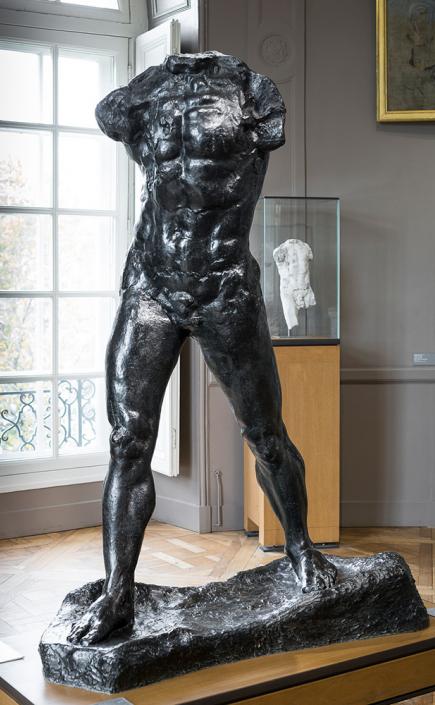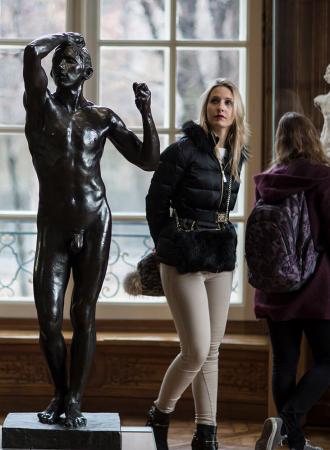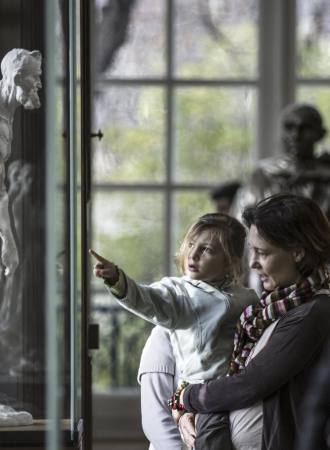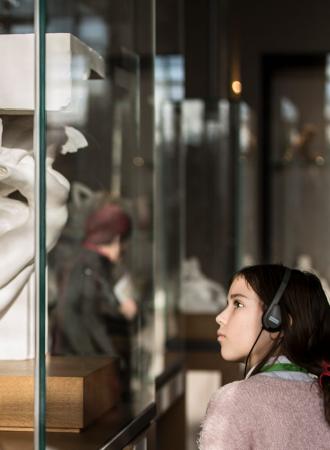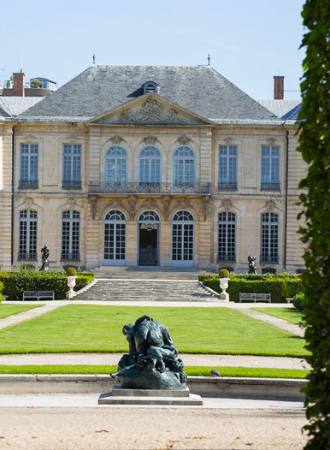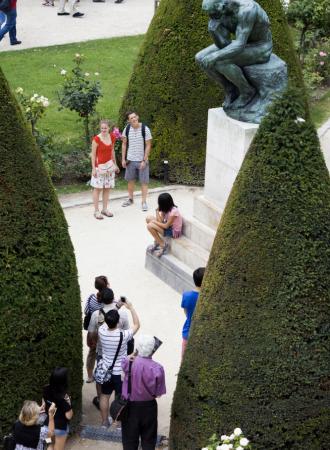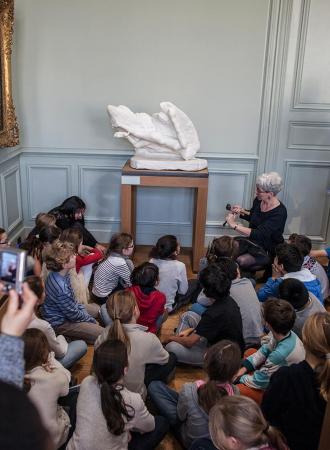Search the site
Study for Balzac’s Dressing Gown
Auguste Rodin (1840-1917)
Throughout his artistic career, Rodin was attentive to the form of the drapery he added to some of his nude figures. For Balzac, he experimented with various different garments including a frock coat and a monk’s habit.
The final Monument to Balzac (1799-1850) is famous for its depiction of the dressing gown the author liked to wear when working at home―and which the Société des Gens de Lettres wanted to see included in the monument.
In his concern for accuracy, Rodin dressed his study for the figure in a real dressing gown, giving it the shape he wanted by stiffening it with plaster. What emerged from the mold was a strange plaster ghost―an empty garment showing the position of the body it covered. This object enabled Rodin to create the very subtle drapery for his Monument to Balzac: his aim was for this part of the work to vibrate with the surrounding space, for the light to flow over its surface without creating too much contrast. The dressing gown was a materialization of the aesthetic Rodin developed at the turn of the century; its softness and fluidity broke away from the expression of power still reflected by the figure’s head.
The artwork in the museum
Permanent collections – first floor, Room 9
We cannot guarantee the presence of all our artworks; some may be out on loan.
Discover the themes related to the work
Date of conception :
1897
Dimensions :
H. 148 cm; W. 57.5; D. 42 cm
Materials :
Plaster, waste mold cast, coated with plaste
Inventory number :
S.00146
Credits :
© Agence photographique du musée Rodin - Jérome Manoukian
Additional information
Iconography
- Study for Balzac’s Dressing Gown(zip, 947 ko)
